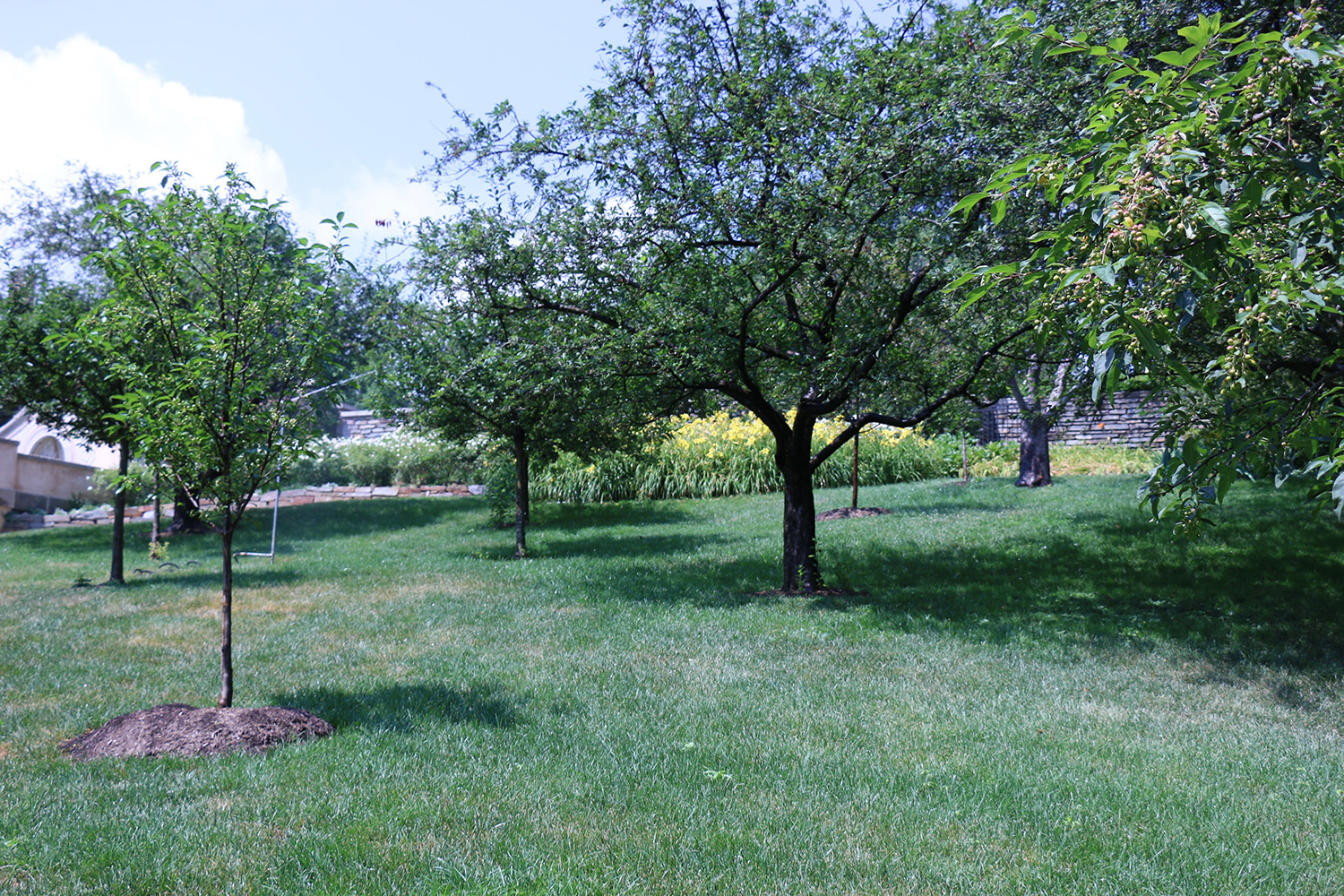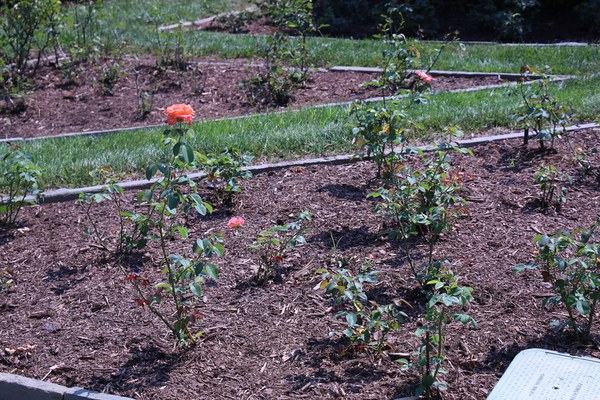This spring, the garden staff at Dumbarton Oaks have been busy helping the space bounce back from its recent renovation, taking care of general maintenance, and replacing failing plantings.
They planted 38 new trees throughout the garden, including oaks on the South and East Lawns, crabapples on Crabapple Hill, cherries on Cherry Hill, and apples in the Orchard. Most of these plantings came from Raemelton Farms, whom we have frequently worked with in the past. The five new apple trees were planted to replace three that had been lost to disease (a few more trees are in the process of dying), while the trees on Crabapple Hill were struck down by a combination of borers and sapsuckers, diseases like fire blight, and simple age.

Throughout the planting process, the garden’s difficult terrain played a role. “We’re really limited by the topography of the space and what kind of machinery we can use to help us bring these things in,” explains Kim Frietze, a member of the garden staff. Most of the new plantings were brought in using tractors or handheld ball carts, while the new elm tree in Mélisande’s Allée and the new fruit trees in the Orchard were brought into the garden using a mechanical lift stationed on a service road just outside the property.
The spring also witnessed work in the Rose Garden, where staff put in 147 new plantings. The new roses are largely Kordes, a brand developed to be highly disease-resistant. Many of them were grown organically, meaning they require less spraying and will help to lower the overall amount of pesticide used throughout the garden. They were also grown on their own rootstock, which helps to further cut down on their susceptibility to disease. “When you graft a desired scion onto a rootstock, it already begins its life with a potential weakness where different types of bacteria or pests can enter,” Frietze explains.
Putting the roses in required new soil as well. Because roses take up so many nutrients from the ground, they deplete it much faster than other plants. There are also several diseases and bacteria that can stay in the soil and transfer to any new plants that are introduced. Bringing in fresh soil mix helps to mitigate the chances of new plantings developing diseases like crown gall, which causes tumorous growths on the roses that restrict the nutrient and water movement in the plant. The roots of the new roses were dipped in a bacterial inoculant to further protect them. “It’s a beneficial bacterium that basically colonizes any wounds on the plant, so it’ll grow where a crown gall bacterium would want to be, and prevent it from entering the wound,” Frietze says.
Another challenge faced by the garden staff is making sure replacement roses match the color scheme of Beatrix Farrand’s original design for the Rose Garden. In general, this rule applies throughout the garden—when old plantings are being replaced by different breeds or types of plants, staff have to be careful to match the general appearance and characteristics of the new plant to Farrand’s specifications.
Replanting the Rose Garden is an ongoing affair. The amount of labor involved in planting roses means that it’s difficult to replace everything that needs to be replaced in one fell swoop. “When you’re ordering that many roses, you want to put them in as quickly as possible to guarantee the success rate of establishment,” Frietze says. Couple that with a busy spring in the garden—staff have worked tirelessly to bring the space together following its recent extensive renovation—and it’s impressive how much got done.
There are other changes to look forward to as well. After a snowstorm compressed them several years ago, the boxwoods in the Rose Garden have finally grown out enough to be shaped. Come this fall, the amorphous, tottering clumps will have been trimmed back into artful shapes—a spiral here, a rolling cloud there—and the Rose Garden, never finished, will once again have a new look.

